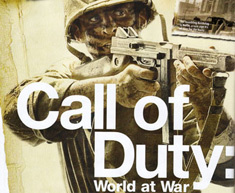This episode sees the debut of a new co-host, videogame writer T.J. Denzer, who joins Jonah Falcon and Scott Dirk for this long episode, discussing Star Wars, spoilers, and other news that didn’t make the cut. This week also has the first Gaming Flashback in over a year, taking a look at The Elder Scrolls IV: Oblivion.
This week’s news includes:
- Mac and Linux versions of Batman: Arkham Knight canceled
- 22 year old eSports FIFA gamer signed by professional football club
- Nintendo cancels sleep tracking device
- Ant Simulator canceled after business partners spent money on booze and strippers
Question of the Week: “What is your favorite strategy game?”

 If you’ve got Microsoft Windows or an Xbox 360 you’ll be eligible for the public beta of Call of Duty: World at War by Activision. Although the game is set to deploy on the 11th of November, many of us will be able to get a taste of the multi-player action early by entering into the beta.
If you’ve got Microsoft Windows or an Xbox 360 you’ll be eligible for the public beta of Call of Duty: World at War by Activision. Although the game is set to deploy on the 11th of November, many of us will be able to get a taste of the multi-player action early by entering into the beta.
My favorite strategy game is Total Annihilation so many units were released for that game. Skirmishes were insane, with tons of units blasting away at each other from air, land and sky.
And yes, I backed Planetary Annihilation.